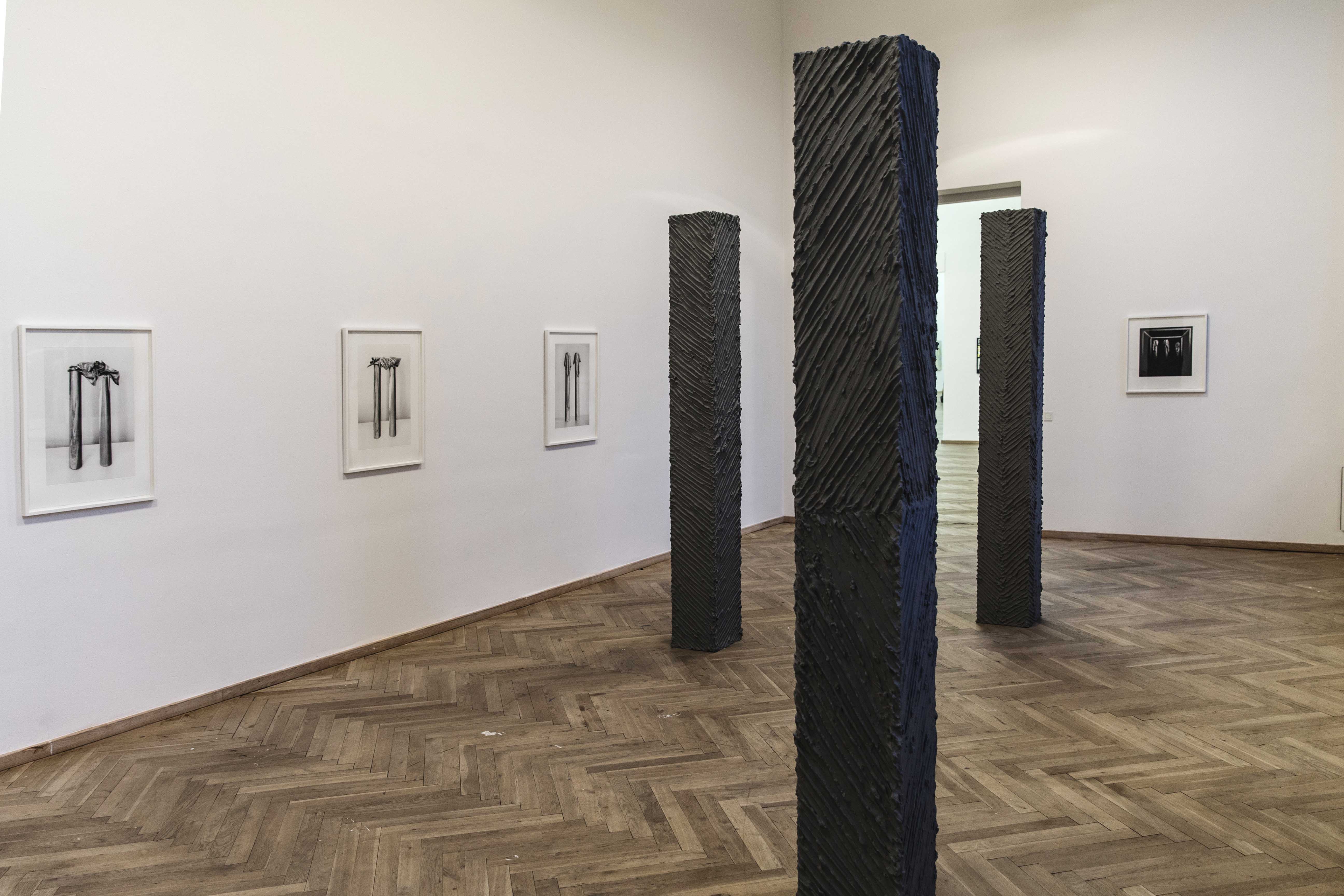The Objects of Use collection is an architect – designers collaboration between Copenhagen based Anne Dorthe Vester and Maria Bruun that was recently awarded with the National Solo Award at Kunsthal Charlottenborg’s Spring Exhibition. The Objects of Use contains objects that are seemingly familiar but not quite recognizable.
The Spring Exhibition is an annual event for exhibiting arts, crafts and design. The exhibition is open for submissions and has been running in one form or another for almost 160 years in Copenhagen. This year 73 out of 570 artist were selected by a jury to participate, and the winners of the National Solo Award Anne Dorthe Vester and Maria Bruun are automatically invited to stage a separate show within next year’s Spring Exhibition.

The Objects of Use is a collection of objects that are seemingly familiar but not quite recognizable. The pieces are oak constructions with ceramic bases and brass connectors, the craftsmanship is meticulous and seem to embody a combination of shakers style carpentry with futurist aesthetics. They are unknown typologies, neither furniture, products nor art. Unlike fellow Copenhagen designer B°Fex, who deconstructs historical typologies and styles, Dorthe Vester and Bruun departs from a few formal elements that are repeated throughout the objects in different constellations. As the title of the collection suggests, the objects do, or might, have a specific purpose although their use may remain unclear or unspecified for the time being. Dorthe Vester and Bruun has said that they approached the project as a scenography, rather than design or architecture. In this way form precedes function and its usage becomes a form of speculation. The Objects of Use initially debuted at the always excellent Etage Projects Gallery where we first come across the collection.
Because the Spring Exhibition contains such a broad range of works it’s impossible to condense to a few sentences, but we should mention of few highlights, for instance last year’s winner of the National Solo Award, Valérie Collart. Collart’s Parts & Wholeness is a series of minimalist oriented photography and sculpture reimagining the pillar, the most essential element and symbol of western architecture and to some extent western civilization.

Benjamin Dufour‘s small acoustic mirrors based on military pre-radar detection technology have an equally minimalist and materialist character. On the opposite side of the spectrum Elvira Varghans & Maja Li Härdelin participates with the trippiest installation, built around a small indoor fountain. Other highlights are designer Petra Lilja’s Medusa mirror or Maja Qvarnström & Erik Lagerwall‘s monumental cardboard and paper installation. The latter duo was like Valérie Collart premiered at last year’s exhibition.
Also, don’t miss the cafe and bookshop designed by Martino Gamper featuring pieces adapted by Gamper from mid-century designs by Hans J. Wegner, (the Y-Chairs) Arne Jacobsen (the tables) and Poul Henningsen (the pendtants) as well as Gamper’s original Arnold Cricus Stool.

